Your search “Keep%20the%20Death%20Penalty%20Abolished%20fin%20the%20Philippfines%20%20%20%20%20%20%20%20%20%20/page/www.humanrights.asia/resources/hrreport/2011/AHRC-SPR-008-2011/at_download/file ”

Member(s)
Collectif des Organisations des Jeunes Solidaires (COJESKI)
on 30 April 2020
The Collectif des organisations des jeunes solidaires du Congo-Kinshasa RDC [Collective of Youth Solidarity Organisations in Congo-Kinshasa DRC, COJESKI-RDC] is a platform consisting of 340 youth organisations which has been operating in Congo-Zaire since 1995. Its main aim is to promote and defend positive human values, sustainable development and good governance of the Democratic Republic […]
2020
Democratic Republic of the Congo

Member(s)
HURILAWS
on 30 April 2020
HURILAWS began operations in 1997 as a specialist provider of human rights legal services and a purveyor of skills in the legal aspects of transition management. Today HURILAWS is also a public policy think tank working towards attainment of development, human rights and good governance. In particular, HURILAWS is the driver of the Multi-Sector Law […]
Nigeria

Member(s)
Taiwan Alliance to End the Death Penalty (TAEDP)
on 30 April 2020
The Taiwan Alliance to End the Death Penalty (TAEDP) is a coalition of local abolitionist NGOs and research institutes, which promotes the reform of Taiwan’s penal system in addition to advocating the abolition of the death penalty. It was launched in September 2003, by the Taiwan Association for Human Rights (TAHR), the Judicial Reform Foundation […]
Taiwan

Member(s)
Women’s Information Consultative Center
on 30 April 2020
The main goal of the Women’s Information Consultative Center is to gather, generalise and disseminate information about women’s human rights and initiatives among women inside and outside Ukraine. Another goal of the Center is to create a discussion about gender issues in the political and social life of Ukraine to achieve real equality in society. […]
Ukraine

Member(s)
Prison Insider
on 30 April 2020
Prison Insider is a French independent NGO. Prison Insider’s main mission is to raise awareness about the conditions of detention and to promote the rights and dignity of people deprived of liberty, everywhere in the world. To reach its aims, the organisation primarily operates an information website. Prison Insider’s vocation is to make available and […]
France
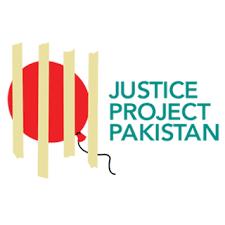
Member(s)
Justice Project Pakistan (JPP)
on 30 April 2020
Justice Project Society, commonly referred to as Justice Project Pakistan (JPP), represents the most vulnerable Pakistani prisoners facing the harshest punishments at home and abroad, including those facing the death penalty, mentally ill prisoners, juvenile prisonners, women, victims of police torture, and overseas Pakistani prisoners. JPP was the winner of the 2016 Franco-German Human Rights […]
Pakistan
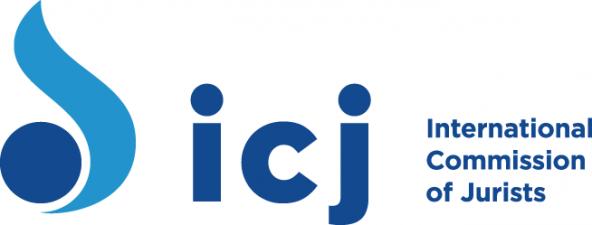
Member(s)
International Commission of Jurists
on 30 April 2020
The International Commission of Jurists (ICJ) is dedicated to promoting rule of law and advancement of human rights around the world. The ICJ statute provides: The Commission carries out activities at the global, regional, national and local level and in particular takes effective steps to: 1. Support and advance the Rule of Law and human […]
Switzerland

Member(s)
Réseau d’alerte et d’intervention pour les droits de l’Homme (RAIDH)
on 30 April 2020
The Alert and Intervention Network for Human Rights (Réseau d’alerte et d’intervention pour les droits de l’Homme (RAIDH) aims to organise, finance and support any work, initiatives, measures, ideas or discussions which aim to defend and promote human rights (particularly civil and political rights, economic, social and cultural rights, international humanitarian rights, rights for refugees, […]
France

Member(s)
Association Marocaine des Droits Humains (AMDH)
on 30 April 2020
Association marocaine des droits humains (AMDH) works towards safeguarding human dignity and for the respect, defence and promotion of human rights. Convinced of the universal nature of these rights, the AMDH bases its action on the international agreements which defend them. It campaigns for them to be respected in the political, civil, economic, social and […]
Morocco

Member(s)
ACAT France
on 30 April 2020
ACAT-France – Action by Christians for the Abolition of Torture – is a human rights NGO that campaigns for the abolition of torture and the death penalty, and defends the right to asylum. Founded in 1974, ACAT-France has 28,000 members, including nearly 6,000 supporters and a team of 25 professionals working in its national secretariat. […]
France

Member(s)
European Saudi Organization for Human Rights (ESOHR)
on 29 November 2023
Founded in 2013 in response to extensive human rights abuses in Saudi Arabia, European Saudi Organization for Human Rights (ESOHR), which is based in Berlin, emerged in the face of a robust campaign aimed at suppressing civil society and curtailing the activities of human rights advocates. ESOHR is committed to the abolition of the death […]
2023
Saudi Arabia

Member(s)
Human Rights and Democracy Media Center (SHAMS)
on 30 April 2020
Human Rights and Democracy Media Center “SHAMS” is a Palestinian non-governmental non-profit organization, established in 2003 in Ramallah by a group of academicians, educated, advocates and human rights activists .“SHAMS” Center holds Special Consultative Status with the Economic and Social Council (ECOSOC) of the United Nations “SHAMS” Center believes that dissemination and generalization of human […]
2020
State of Palestine
Document(s)
Detailed Factsheet
By World coalition against the death penalty , on 10 October 2011
2011
Campaigning
Trend Towards Abolition
frMore details Download [ pdf - 201 Ko ]
Detailed Factsheet 2019
- Document type Campaigning
- Themes list Trend Towards Abolition
- Available languages Fiche détaillée 2011
Document(s)
Dangerousness, Risk Assessment, and Capital Sentencing
By Aletha M. Claussen-Schulza / Psychology, Public Policy and Law / Marc W. Pearceb / Robert F. Schopp, on 1 January 2004
2004
Article
United States
More details See the document
Judges, jurors, police officers, and others are sometimes asked to make a variety of decisions based on judgments of dangerousness. Reliance on judgments of dangerousness in a variety of legal contexts has led to considerable debate and has been the focus of numerous publications. However, a substantial portion of the debate has centered on the accuracy and improvement of risk assessments rather than the issues concerning the use of dangerousness as a legal criterion. This article focuses on whether dangerousness judgments can play a useful role in capital sentencing decisions within the framework of “guided discretion” and “individualized assessment” set forth by the Supreme Court of the United States. It examines the relationship between these legal doctrines and contemporary approaches to risk assessment, and it discusses the potential tension between these approaches to risk assessment and these legal doctrines. The analysis suggests that expert testimony has the potential to undermine rather than assist the sentencer’s efforts to make capital sentencing decisions in a manner consistent with Supreme Court doctrine. This analysis includes a discussion of the advances and limitations of current approaches to risk assessment in the context of capital sentencing.
- Document type Article
- Countries list United States
- Themes list Networks,
Document(s)
A Comparative Analysis of Capital Punishment: Statutes, Policies, Frequencies, and Public Attitudes the World Over
By Dagny Dlaskovich / Rita Simon / Lexington Books, on 1 January 2002
2002
Book
More details See the document
A Comparative Analysis of Capital Punishment provides a concise and detailed history of the death penalty. Incorporating and synthesizing public opinion data and empirical studies, Simon and Blaskovich’s work compares, across societies, the types of offenses punishable by death, the level of public support for the death penalty, the forms the penalty takes, and the categories of persons exempt from punishment.
- Document type Book
- Themes list Public opinion,
Document(s)
Tanzania Human Rights Report – 2017 ‘Unknown Assailants’: A Threat to Human Rights
By Legal and Human Rights Centre, on 8 September 2020
2020
NGO report
United Republic of Tanzania
More details See the document
“Unknown Assailants: A Threat to Human Rights”So is named The Tanzania Human Rights Report of 2017 released by the Legal and Human Rights Centre (LHRC).This report was published on April, 25th 2018 and it enlights for the fifteenth time the major human rights violation in Tanzania. This report, while it deals with human rights violation in Tanzania concerning civil and politial rights, freedom of violence, freedom of expression, etc, also presents some issues due to these violations such as the right to participate in governance, particularly the right to participate in political life, which are deny.
- Document type NGO report
- Countries list United Republic of Tanzania
- Themes list Death Penalty, Statistics, Country/Regional profiles,
Document(s)
Viêt Namese : Liệu Hình phạt Tử hình Có Tác dụng Ngăn chặn Tội phạm Giết người ở Nhật Bản?
By David T. Johnson / Asian Law Centre, on 8 September 2020
Multimedia content
Japan
More details See the document
Không giống như ở Mỹ, nơi tràn ngập các nghiên cứu về tử hình và tác dụng răn đe của hình phạt này, có rất ít nghiên cứu về hình phạt tử hình và tác dụng răn đe của nó ở Nhật Bản. Mặc dù vậy, người dân và các quan chức nước này vẫn đưa ra những nhậnđịnh đầy tự tin đối với chủ đề này. Trên thực tế, tác dụng răn đe được xem là “điểm tranh cãi chủ chốt giữa các lập luận ủng hộ và phản đối” hình phạt tử hình ở Nhật Bản. Khó khăn trong việc thu thập các số liệu chuẩn mực về tội phạm từ Chính phủ Nhật Bản đã khiến cho việc tiến hành một nghiên cứu nghiêm túc về đề tài này gần như là bất khả thi. Bài viết này sử dụng các số liệu thống kê hàng tháng về tội phạm giết người và tộiphạm giết người cướp mà trước không thể tiếp cận được để xem xét liệu việc tuyên và thực thi án tử hình ở Nhật Bản có tác dụng ngăn chặn những tội phạm kể trên trong giai đoạn từ năm 1990 đến 2010 hay không. Và phát hiện chính của nghiên cứu này là hình phạt tử hình không có tác dụng răn đe tội phạm giết người và tội phạm cướp của giết người trong giai đoạn nói trên. Cần phải có thêm nghiên cứu về đề tài này, tuy nhiên, tại thời điểm hiện tại Chính phủ Nhật Bản không có bất cứ căn cứ chắc chắn nào để tiếp tục khẳng định nước này cần duy trì hình phạt tử hình vì hình phạt này giúp ngăn chặn tội phạm có tính đặc biệt nghiêm trọng.
- Document type Multimedia content
- Countries list Japan
logo-Kurdpa
on 29 November 2023
2023
Document(s)
Does the Death Penalty Deter Homicide in Japan?
By David T. Johnson / Asian Law Centre, on 1 January 2017
2017
Multimedia content
Japan
More details See the document
Unlike the United States, where death penalty and deterrence studies are legion, there has been little research about the death penalty and deterrence in Japan, though the paucity of studies has not discouraged citizens and officials from making confident claims about this issue. Indeed, deterrence has been called “the core of argumentation for and against” the death penalty in Japan. Serious research on this subject has beenall but impossible because of difficulties obtaining decent crime data from the Japanese government. This paper uses monthly homicide and robbery-homicide statistics thatwere previously unavailable to examine whether death sentences and executions in Japan deterred these crimes from 1990 to 2010. The main finding is that the death penalty did not deter homicide or robbery-homicide during this period. More research is needed on this subject, but at present the Japanese government has no sound basis for continuing to claim that the country needs to retain the death penalty because it detersheinous crime.
- Document type Multimedia content
- Countries list Japan
- Themes list Deterrence , Death Penalty,
Document(s)
The Death Penalty and Victims
By United Nations, on 1 January 2016
2016
International law - United Nations
More details See the document
This publication includes perspectives from a broad range of victims. While some of them are family members of crime victims, others are victims of human rights violations in application of the death penalty, of its brutality and traumatic effects. Victims’ perspectives, taken holistically, make a compelling case against the death penalty. When it comes to the death penalty, almost everyone loses. The perspectives of the victims on the death penalty as reflected in this book are likely to provoke tough discussions. This may be a welcome challenge. The publication was launched at a high-level event on 21st September at the UN in New York.The full recording of the event and the programme is available at: texte
- Document type International law - United Nations
- Themes list Innocence, Murder Victims' Families, Death Penalty,
Document(s)
A BRIEF INTRODUCTION TO THE INDIAN JUDICIAL SYSTEM AND COURT HIERARCHY
By MARY KOZLOVSKI / Asian Law Centre, on 1 January 2019
2019
Multimedia content
India
More details See the document
This paper provides an introduction to the Indian judicial system and court hierarchy, outlining the jurisdiction of constitutional and statutory courts and tribunals and the appointment, tenure and removal of judges. It describes forms of alternative dispute resolution that have emerged in recent decades, partly to combat delays in the court system, and informal dispute resolution bodies that mediate family disputes, such as Sharia courts. The paper concludes by discussing the contentious issues of delay in the court system, public interest litigation, and appointments to the Supreme and High Courts of India.
- Document type Multimedia content
- Countries list India
Document(s)
The Arts and Human Rights: Introducing the “Sweet Destiny” Album and Film
on 25 August 2021
2021
Multimedia content
Iran (Islamic Republic of)
More details See the document
Iran Human Rights (IHR); August 25, 2021: Pioneering Iranian alternative rock band, Kiosk have released a new musical film and album titled “Sweet Destiny.” Based on a historic 1853 photograph of a public execution by cannon fire in Iran, it is the first professional Farsi language album or film of its kind to be dedicated to the subject of the death penalty.
The story is narrated by the photographer who has been summoned to photograph the scene of the execution as proof and questions the defendant’s crime. Divided into 14 acts, the imagined story of the execution is layered with cultural and political metaphors and references. Kiosk’s rich and poignant songs create context, take the viewers through the history of Iran since 1853 and highlight the critical issues around the death penalty and human rights breaches in Iran. Using historical photographs, paintings and animation, Sweet Destiny is visually mesmerising and thought provoking with sprinkles of satire that masterfully cross cultural boundaries. The film is subtitled in English.
- Document type Multimedia content
- Countries list Iran (Islamic Republic of)
Document(s)
Reducing Facial Stereotype Bias in Consequential Social Judgments: Intervention Success With White Male Faces
By Youngki Hong, Kao-Wei Chua, & Jonathan B. Freeman, Columbia University, on 25 January 2024
2024
Article
United States
More details See the document
Published on December 18, 2023.
Initial impressions of others based on facial appearances are often inaccurate yet can lead to dire outcomes. Across four studies, adult participants underwent a counterstereotype training to reduce their reliance on facial appearance in consequential social judgments of White male faces. In Studies 1 and 2, trustworthiness and sentencing judgments among control participants predicted whether real-world inmates were sentenced to death versus life in prison, but these relationships were diminished among trained participants. In Study 3, a sequential priming paradigm demonstrated that the training was able to abolish the relationship between even automatically and implicitly perceived trustworthiness and the inmates’ life-or-death sentences. Study 4 extended these results to realistic decision-making, showing that training reduced the impact of facial trustworthiness on sentencing decisions even in the presence of decision-relevant information. Overall, our findings suggest that a counterstereotype intervention can mitigate the potentially harmful effects of relying on facial appearance in consequential social judgments.
- Document type Article
- Countries list United States
Document(s)
Responsible Business Engagement on the Death Penalty. A Practical Guide
By Responsible Business Initiative on the Death Penalty, on 1 January 2019
2019
Working with...
frMore details See the document
Business engagement in the death penalty is critical because of the impact it can have. Putsimply: the power is in your hands. If your business is looking for a human rights issue whereit can achieve measurable change, advocacy on the death penalty must be considered.Global support for the death penalty is declining. Meanwhile, competition for investment isfierce. Governments and the public at large care more about job creation and a healthy economythan a system of executions. Therefore, the voices of businesses and business leaders havea huge role to play in shaping public dialogue about whether to keep – or end – the use ofcapital punishment.
- Document type Working with...
- Themes list Networks, Death Penalty,
- Available languages Entreprises Responsables et Engagements sur la Peine de Mort: Guide Pratique
Article(s)
Jamaica vote illustrates retentionist trend in the Caribbean
on 9 January 2009
Jamaican lawmakers voted to keep capital punishment and the government seems determined to use it. Caribbean abolitionists are battling similar moves across the region.
2009
Jamaica
Public Opinion
Saint Kitts and Nevis
Document(s)
Bylaws of the World Coalition Against the Death Penalty 2023
By World Coalition Against the Death Penalty, on 22 August 2023
2023
World Coalition
Trend Towards Abolition
frMore details Download [ pdf - 146 Ko ]
- Document type World Coalition
- Themes list Trend Towards Abolition
- Available languages Statuts de la Coalition mondiale contre la peine de mort 2023
Document(s)
Bylaws 2021
By World Coalition Against the Death Penalty, on 9 September 2021
2021
World Coalition
frMore details Download [ pdf - 97 Ko ]
Bylaws of the World Coalition Against the Death Penalty As Amended by the 18 June 2021 General Assembly
- Document type World Coalition
- Available languages Statuts 2021
Document(s)
Does care have to be at the periphery if crime is at the centre? A conversation that unspools the various threads tying feminism with crime.
By The Third Eye, on 15 February 2024
2024
Article
Gender
Women
More details See the document
Published on January 30, 2024.
The Third Eye invited Maitreyi Misra of Project 39A to help us think through our central idea: why do we need a feminist way of looking at crime, and how does that help the larger goal of social justice?
Project 39A is inspired by Article 39-A of the Indian Constitution, a provision that furthers the intertwined values of equal justice and equal opportunity by removing economic and social barriers. Using empirical research to re-examine practices and policies in the criminal justice system, Project 39A aims to trigger new conversations on legal aid, torture, forensics, mental health in prisons, and the death penalty.
- Document type Article
- Themes list Gender / Women
Document(s)
Helpful Hints and Advice on Online Harassment
By World Coalition against the Death Penalty , on 10 August 2021
2021
Campaigning
Public Opinion
frMore details Download [ pdf - 165 Ko ]
Online advocacy efforts by human rights organizations face increasingly dangerous threats. In this short guide, we elaborate a few helpful hints and
advice, as well as list a compilation of resources that organizations can refer to handle online harassment.
- Document type Campaigning
- Themes list Public Opinion
- Available languages Astuces et conseils utiles face au harcèlement en ligne
Document(s)
The Dark At the Top of the Stairs: Four Destructive Influences of Capital Punishment on American Criminal Justice
By David T. Johnson / Franklin Zimring / Social Science Research Network , on 1 January 2011
2011
Academic report
More details See the document
Executionhas also (1) had a powerful negative influence on the substantive criminal law; (2) promoted the practice of using extreme penal sanctions as status rewards to crime victims and their families; (3) provided moral camouflage for a penalty of life imprisonment without possibility of parole, which is almost as brutal as state killing; and (4) diverted legal andjudicial resources from the scrutiny of other punishments and governmental practicesin an era of mass imprisonment. This chapter discusses these four latent impacts of attempts to revive and rationalize the death penalty in the United States.
- Document type Academic report
- Themes list Arbitrariness,
Document(s)
Opting for Real Death Penalty Reform
By James S. Liebman / Ohio State Law Journal, on 1 January 2002
2002
Article
United States
More details See the document
The capital punishment system in the United States is broken. Studies reveal growing delays nationwide between death sentences and executions and inexcusably high rates of reversals and retrials of capital verdicts. The current system persistently malfunctions because it rewards trial actors, such as police, prosecutors, and trial judges, for imposing death sentences, but it does not force them either to avoid making mistakes or to bear the cost of mistakes that are made during the process. Nor is there any adversarial discipline imposed at the trial level because capital defendants usually receive appointed counsel who either do not have experience trying capital cases or who receive inadequate resources from the State to pay litigation expenses. Instead, the appellate system is forced to deal with large amounts of error, creating backlog and delays. This article proposes a radical trade-off for capital defendants in which they agree to give up existing post-conviction review rights in return for a real assurance of better qualified, higher quality trial counsel. This proposal will avoid the traps of window dressing reforms, save states a good bit of the expense of appellate review, and make the capital punishment system more fair, efficient, and effective.
- Document type Article
- Countries list United States
- Themes list Legal Representation,
Document(s)
Handbook of Forensic Psychiatric Practice in Capital Cases
By The Death Penalty Project / Nick Green / Nigel Eastman / Richard Latham / Marc Lyall, on 1 January 2018
2018
Working with...
More details See the document
This Handbook represents a stand alone, single-volume practionners’ handbook for the use of psychiatrists and psychologists, sollicitors, barristers, prosecuting authorities and the courts, who are required to deal with homicide, and other cases, in jurisdictions and circumstances where the death penalty can apply.
- Document type Working with...
- Themes list Mental Illness,
Document(s)
Capital and punishment: Resource scarcity increases endorsement of the death penalty
By Arizona State University (ASU), on 1 January 2018
Academic report
More details See the document
A new study by an interdisciplinary team of Arizona State University psychology researchers has found a link between the actual and perceived scarcity of resources and support for capital punishment. The study discovered that countries with greater resource scarcity were more likely to have a death penalty, as were U.S. states with lower per capita income.
- Document type Academic report
- Themes list Death Penalty, Financial cost,
Document(s)
Showing Remorse: Reflections on the Gap between Expression and Attribution in Cases of Wrongful Conviction
By Richard Weisman / Canadian Journal of Criminology and Criminal Justice, on 1 January 2004
2004
Article
Canada
More details See the document
This paper seeks first to show that persons who are convicted of crimes can be perceived as either remorseful or as lacking in remorse. This division establishes a moral hierarchy that has profound implications for the characterization and disposition of persons who are so designated. Second, using both Canadian and American cases, it looks at how inclusion in the category of the unremorseful affects the characterization and disposition of those who have been wrongfully convicted. Finally, it suggests that remorse is a major site of conflict between persons who are wrongfully convicted and officials within the criminal justice system, conflict that involves the use of institutional pressure to encourage the expression of remorse, on the one hand, and the mobilization of individual resources to resist those expressions.
- Document type Article
- Countries list Canada
- Themes list Networks,
Document(s)
10 Steps to Writing a UPR Stakeholder Report
By The Advocates for Human Rights, on 1 January 2014
2014
Working with...
More details See the document
This four-page document proposes a roadmap for organisations interested in submitting reports to the United Nations’ Universal Periodic Review of Human Rights.
- Document type Working with...
- Themes list International law,
Document(s)
Condemning the Other in Death Penalty Trials: Biographical Racism, Structural Mitigation, and the Empathic Divide
By Craig Haney / DePaul Law Review, on 1 January 2004
2004
Article
United States
More details See the document
This article analyses racial discrimination in the administration of the death penalty – despite their importance to the critical debate over the fairness of capital punishment – are not able to address the effects of many of the most pernicious forms of racism in American society. In particular, they cannot examine “biographical racism” – the accumulation of race-based obstacles, indignities, and criminogenic influences that characterizes the life histories of so many African-American capital defendants. Second, I propose that recognizing the role of this especially pernicious form of racism in the lives of capital defendants has significant implications for the way we estimate fairness (as opposed to parity) in our analyses of death sentencing. Chronic exposure to race-based, life-altering experiences in the form of biographical racism represents a profoundly important kind of “structural mitigation.” Because of the way our capital sentencing laws are fashioned, and the requirement that jurors must engage in a “moral inquiry into the culpability” of anyone whom they might sentence to die, this kind of mitigation provides a built-in argument against imposing the death penalty on African-American capital defendants. It is structured into their social histories by the nature of the society into which they have been born.
- Document type Article
- Countries list United States
- Themes list Discrimination,
Document(s)
Dead Innocent: The Death Penalty Abolitionist Search for a Wrongful Execution.
By Jeffrey L. Kirchmeier / Tulsa Law Review, on 1 January 2006
2006
Article
United States
More details See the document
This article examines the debate about whether or not an innocent person has been executed in the United States. The article begins by discussing several famous historical claims of wrongful execution, including Sacco & Vanzetti, the Rosenbergs, and Bruno Hauptmann. Then, the article addresses some recent claims of wrongful executions, including the case of Larry Griffin and the impact of a 2006 DNA test in the Roger Coleman case. The article evaluates why some innocence claims attract more attention than others. By recognizing two obstacles in wrongful execution claims and by establishing five lessons for gaining media attention, the article uses its historical analysis to extract strategy lessons for death penalty abolitionists. Finally, the article weighs arguments regarding the pros and cons of an abolitionist strategy that focuses on proving the innocence of executed individuals. The article concludes that wrongful execution claims provide an important argument for abolitionists, but such claims should not be presented as the main or only problem with the death penalty.
- Document type Article
- Countries list United States
- Themes list Innocence,
Document(s)
Averting Mistaken Executions by Adopting the Model Penal Code’s Exclusion of Death in the Presence of Lingering Doubts
By Margery Malkin Koosed / Northern Illinois Law Review, on 1 January 2001
2001
Article
United States
More details See the document
This article considers community views on the risk of mistaken executions and how sentencing juries respond to such risks. It explores the present state of the law surrounding risk-taking regarding lingering or residual doubt, and finds the law in a state of denial. Though the risk may be there, and jurors may see it, this is not something they are directed, or even invited, to consider. Some jurors may deny effect to the risk they see, believing it is not a proper subject of their attention. Others will consider it, yet wonder whether they should. This inconsistent treatment, and dissonance from what the public wants and justifiably expects from its legal system, is largely a product of the United States Supreme Court’s 1988 decision in Franklin v. Lynaugh. Arguably misread, and at least misguided, the Court’s decision on considering lingering or residual doubts about guilt as a mitigating factor at the penalty phase has retarded development of meaningful ways to avert mistaken executions.
- Document type Article
- Countries list United States
- Themes list Networks,
Document(s)
The Truth About False Confessions and Advocacy Scholarship
By Richard A. Leo / Criminal Law Bulletin, on 1 January 2001
Article
United States
More details See the document
In 1998 Richard A. Leo and Richard J. Ofshe published a study of false confession cases entitled, The Consequences of False Confessions: Deprivations of Liberty and Miscarriages of Justice in the Age of Psychological Interrogation, which drew a response from Paul Cassell (1999), The Guilty and the Innocent : An Examination of Alleged Cases of Wrongful Conviction from False Confessions. In this article, the authors demonstrate that Cassell s article misreports the research and analysis contained in Leo and Ofshes 1998 article, and that Cassell s attempt to challenge Leo and Ofshes classifications of nine out of sixty false confessions is erroneous because Cassell excludes or presents an incomplete picture of important facts in his case summaries, selectively ignores enormous inconsistencies, implausibilities and/or contradictions in the prosecution s cases, and fails to acknowledge the existence of substantial exculpatory, if not dispositive, evidence. To illustrate the problems and biases in Cassell s commentary, this article discusses at length one of Cassell s challenges, the Barry Lee Fairchild case, in the main body of the article and in a detailed appendix analyzes the eight other cases (Joseph Giarratano, Paul Ingram, Richard Lapointe, Jessie Misskelley, Bradley Page, James Harry Reyos, Linda Stangel, and Martin Tankleff). Leo and Ofshe provide a point by point refutation of Cassell s assertions in all nine cases, demonstrating that all nine individuals were, as originally classified, almost certainly innocent of the crimes to which they had confessed.
- Document type Article
- Countries list United States
- Themes list Networks,
Document(s)
Discrimination and Instructional Comprehension: Guided Discretion, Racial Bias, and the Death Penalty
By Craig Haney / Mona Lynch / Law and Human Behavior, on 1 January 2000
2000
Article
United States
More details See the document
This study links two previously unrelated lines of research: The lack of comprehension of capital penalty-phase jury instructions and discriminatory death sentencing. Jury-eligible subjects were randomly assigned to view one of four versions of a simulated capital penalty trial in which the race of defendant (Black or White) and the race of victim (Black or White) were varied orthogonally. Dependent measures included a sentencing verdict (life without the possibility of parole or the death penalty), ratings of penalty phase evidence, and a test of instructional comprehension. Results indicated that instructional comprehension was poor overall and that, although Black defendants were treated only slightly more punitively than White defendants in general, discriminatory effects were concentrated among participants whose comprehension was poorest. In addition, the use of penalty phase evidence differed as a function of race of defendant and whether the participant sentenced the defendant to life or death. The study suggest that racially biased and capricious death sentencing may be in part caused or exacerbated by the inability to comprehend penalty phase instructions.
- Document type Article
- Countries list United States
- Themes list Networks,
Document(s)
EU Policy on Death Penalty
By Council of Europe, on 1 January 2014
2014
Arguments against the death penalty
More details See the document
This page contains videos and documents on issues dealing with the death penalty.
- Document type Arguments against the death penalty
Document(s)
China Executed 2,400 People in 2013, Dui Hua
By Dui Hua Human Rights Journal, on 1 January 2014
Article
China
More details See the document
The Dui Hua Foundation estimates that China executed approximately 2,400 people in 2013 and will execute roughly the same number of people in 2014. Annual declines in executions recorded in recent years are likely to be offset in 2014 by the use of capital punishment in anti-terrorism campaigns in Xinjiang and the anti-corruption campaign nationwide.
- Document type Article
- Countries list China
- Themes list Statistics,

Article(s)
Fiji abolishes death penalty for all crimes through amendment to military law
By Auréie Plaçais, on 23 February 2015
On 9 February 2015, Attorney General Aiyaz Sayed-Khaiyum introduced in parliament the Republic of Fiji Military Forces amended Bill 2015, a one page bill to abolish the death penalty provision.
2015
Fiji
Document(s)
Stories of Victims of Terrorism
By World Coalition Against the Death Penalty, on 1 January 2016
2016
Multimedia content
frMore details Download [ pdf - 142 Ko ]
Together with AfVT, the World Coalition has developed this two-page note explaining why some victims of terrorism are against the death penalty.
- Document type Multimedia content
- Themes list Murder Victims' Families, Terrorism,
- Available languages Témoignages de victimes du terrorisme
Document(s)
Leaflet – 2020 World Day
By World Coalition Against the Death Penalty, on 8 September 2020
2020
Academic report
frMore details Download [ - 0 Ko ]
2020 World Day 8-page leaflet
- Document type Academic report
- Themes list Fair Trial, World Coalition Against the Death Penalty, Death Penalty,
- Available languages Brochure - Journée mondiale 2020
Document(s)
The Failed Failsafe: The Politics of Executive Clemency
By Cathleen Burnett / Texas Journal on Civil Liberties and Civil Rights, on 1 January 2003
2003
Article
United States
More details See the document
This article discusses the role of executive clemency in light of the current political environment. Attending to the political aspects of the capital litigation process gives insight into the trends in the use of executive clemency
- Document type Article
- Countries list United States
- Themes list Clemency,
Document(s)
Database Center for North Korean Human Rights – Briefings on public execution
By Database Center for North Korean Human Rights, on 8 September 2020
2020
Article
Republic of Korea
More details See the document
NKDB hosts a monthly English language briefing and discussion on North Korean human rights every month with embassy officials, NGO staff, and NKDB staff as guests
- Document type Article
- Countries list Republic of Korea
- Themes list World Coalition Against the Death Penalty, Death Penalty, Country/Regional profiles,
Document(s)
The Prevalence and Potential Causes of Wrongful Conviction by Fingerprint Evidence.
By Simon A. Cole / Golden Gate University Law Review, on 1 January 2006
2006
Article
United States
More details See the document
As the number of post-conviction DNA exonerations mounted and the Innocence Project undertook to treat these exonerations as a data set indicating the principal causes of wrongful conviction, the absence of fingerprint cases in that data set could have been interpreted as soft evidence that latent print evidence was unlikely to contribute to wrongful convictions. That situation changed in 2004 when Stephan Cowans became the first – and thus far the only – person to be exonerated by DNA evidence for a wrongful conviction in which fingerprint evidence was a contributing factor. Cowans’s wrongful conviction in Boston in 1997 for the attempted murder of a police officer was based almost solely on eyewitness identification and latent print evidence. The Cowans case not only provided dramatic additional support for the already established proposition that wrongful conviction by fingerprint was possible, it also demonstrated why the exposure of such cases, when they do occur, is exceedingly unlikely. These points have already been made in a comprehensive 2005 study of exposed cases of latent print misattributions. In this article, I discuss some additional things that we have learned about the prevalence and potential causes of wrongful conviction by fingerprint in the short time since the publication of that study.
- Document type Article
- Countries list United States
- Themes list Innocence,
Document(s)
Retribution and Redemption in the Operation of Executive Clemency
By Elizabeth Rapaport / Chicago Kent Law Review, on 1 January 2000
2000
Article
United States
More details See the document
In this Article, my goal is to raise doubts about the adequacy of the neo-retributive theory of clemency and stimulate reappraisal and development of what I will call the “redemptive” perspective. To this end I will present an exposition and critique of neo-retributive theory of clemency.
- Document type Article
- Countries list United States
- Themes list Retribution, Clemency,
Document(s)
Mentally Ill Prisoners on Death Row: Unsolved Puzzles for Courts and Legislatures
By Richard J. Bonnie / Catholic University Law Review, on 1 January 2004
2004
Article
United States
More details See the document
This paper focuses on the problems relating to mental illness or other mental disabilities that arise after sentencing, where the underlying values at stake are the dignity of the condemned prisoner and the integrity of the law.
- Document type Article
- Countries list United States
- Themes list Mental Illness, Intellectual Disability,
Document(s)
International Law and the Moral Precipice: A Legal Policy Critique of the Death Row Phenomenon
By David A Sadoff / Tulane Journal of International and Comparative Law, on 1 January 2008
2008
Article
More details See the document
This article provides an in-depth analysis of death row phenomenon.
- Document type Article
- Themes list Death Row Phenomenon,
Document(s)
Sri Lankan expert needed to conduct study on the death penalty – Terms of reference
By World Coalition Against the Death Penalty, on 23 December 2021
2021
World Coalition
More details Download [ pdf - 83 Ko ]
- Document type World Coalition
Document(s)
International Legal Trends and the Mandatory Death Penalty in the Commonwealth Caribbean
By Saul Lehrfreund / Oxford University Commonwealth Law Journal, on 1 January 2001
2001
Article
More details See the document
Until the landmark decision of the Eastern Caribbean Court of Appeal in Hufhes and Spense v The Queen, the convetional wisdom was that the mandatory imposition of the death penalty could not be challenged in Commonwealth Caribbean countries as unconstitutional and that, in any event, the savings clauses contained in the constitutions would prevent any such challenge. As a consequence, the constitutional courts in the Commonwealth Caribbean are now being asked to consider a number of specific issues in relation to the mandatory death penalty: first, whether it is constitutional; and second, whether any chanllenges to the mandatory death penalty are barred by the savings clauses found to a varying degree, within each Caribbean constitution of and implications for global and regional developments are highly significant.
- Document type Article
- Themes list Mandatory Death Penalty,
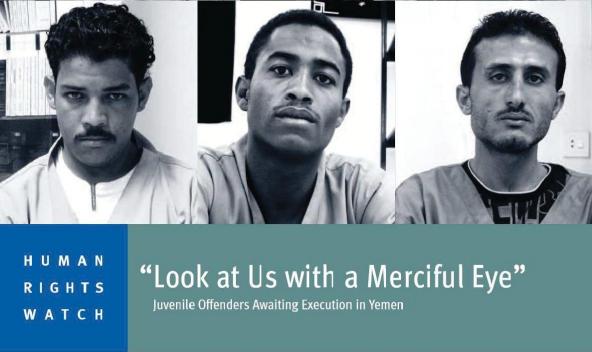
Article(s)
“Look at us with a merciful eye”
By Human Rights Watch, on 5 March 2013
Human Rights Watch is launching a 30-page report on juvenile offenders awaiting execution on Yemen’s death row.
2013
Juveniles
Yemen
Yemen
Document(s)
Race Discrimination and the Legitimacy of Capital Punishment: Reflections on the Interaction of Fact and Perception
By George Woodworth / David C. Baldus / DePaul Law Review, on 1 January 2004
2004
Article
United States
More details See the document
The authors analyze data concerning race discrimination in capital sentencing and data regarding how the public perceives this issue. They conclude that race discrimination is not an inevitable feature of all death penalty systems. Before Furman v. Georgia was decided in 1972, widespread discrimination against black defendants marred the practice of capital punishment in America. According to studies cited by the authors, race-of-defendant discrimination has lessened since Furman. However, race-of-victim discrimination remains a significant factor in sentencing; defendants with white victims are at a significantly higher risk of being sentenced to death and executed than are defendants whose victims are black, Asian, or Hispanic. From 1976 to 2002, the proportion of white-victim cases among all murder and non-negligent manslaughter cases has ranged between 51% and 56%. However, 81% of executed defendants had white victims. Polling data indicate that the general public perceives only one form of race discrimination in the use of the death penalty – race-of-defendant discrimination – and that the public and elected officials may see racial discrimination as inevitable in the criminal justice system. Race of victim discrimination is a pervasive problem in the death penalty system. However, race discrimination is not inevitable. If serious controls were enacted to address this problem (such as those imposed in a few states) a fairer system could result.
- Document type Article
- Countries list United States
- Themes list Discrimination,

Article(s)
With 969 executions, 2015 turns out to be the deadliest year in Iran since 1990
By Marion Gauer, on 4 April 2016
This 8th annual report (released by Iran Human Rights and Ensemble contre la peine de mort) deals with the number of executions, the trend compared to previous years, the charges, the geographic distribution, as well as the monthly breakdown of the executions in Iran in 2015. These two organizations have been collaborating since 2011, in order to provide annual assessment and analysis of the death penalty trends in Iran. The 2015 report is the result of hard work from IHR members and supporters who took part in the documenting, analyzing and writing of its content.
2016
Iran (Islamic Republic of)
Document(s)
Public Opinion and the Death Penalty Guide
By The Death Penalty Project, on 1 November 2022
2022
NGO report
Public Opinion
More details See the document
When faced with calls to join the majority of states worldwide that have now abolished capital punishment, a key justification, typically relied upon by retentionist states, is that their citizens are not yet ready for abolition, and that political leaders must represent ‘the will of the people.’ The Death Penalty Project produced this resource on public opinion and the death penalty.
- Document type NGO report
- Themes list Public Opinion
Document(s)
A/HRC/RES/54/35 Resolution adopted by the Human Rights Council
on 7 February 2024
2024
International law - United Nations
aresfrruzh-hantMore details See the document
- Document type International law - United Nations
- Available languages A/HRC/RES/54/35قرار اعتمده مجلس حقوق اإلنسانA/HRC/RES/54/35 Resolución aprobada por el Consejo de Derechos HumanosA/HRC/RES/54/35 Résolution adoptée par le Conseil des droits de l’hommeA/HRC/RES/54/35 Резолюция, принятая Советом по правам человекаA/HRC/RES/54/35 人权理事会 通过的决议
Document(s)
Roper and Race: the Nature and Effects of Death Penalty Exclusions for Juveniles and the “Late Adolescent Class”
By Craig Haney, Frank R. Baumgartner and Karen Steele, on 20 October 2022
2022
Academic report
United States
More details See the document
In Roper v. Simmons (2005), the US Supreme Court raised the minimum age at which someone could be subjected to capital punishment, ruling that no one under the age of 18 at the time of their crime could be sentenced to death. The present article discusses the legal context and rationale by which the Court established the current age-based limit on death penalty eligibility as well as the scientific basis for a recent American Psychological Association Resolution that recommended extending that limit to include members of the “late adolescent class” (i.e., persons from 18 to 20 years old). In addition, we present new data that address the little-discussed but important racial/ethnic implications of these age-based limits to capital punishment, both for the already established Roper exclusion and the APA-proposed exclusion for the late adolescent class. In fact, a much higher percentage of persons in the late adolescent class who were sentenced to death in the post-Roper era were non-White, suggesting that their age-based exclusion would help to remedy this problematic pattern.
- Document type Academic report
- Countries list United States
Document(s)
Lobbying Kit
By World Coalition Against the Death Penalty, on 1 January 2017
2017
Lobbying
frMore details Download [ pdf - 798 Ko ]
The kit aims at providing step-by-step advice on how to lobby government decision-makers at all stages of the ratification process. It includes: model letters , model press release, advice on how and when to use information contained in this kit.
- Document type Lobbying
- Themes list Networks,
- Available languages Kit de Lobbying
Document(s)
A/HRC/48/L.17/Rev.1 Resolution adopted by the Human Rights Council
on 2 June 2021
2021
International law - United Nations
aresfrruzh-hantMore details See the document
- Document type International law - United Nations
- Available languages A/HRC/48/L.17/Rev.1 قرار اعتمده جملس حقوق اإلنسايفA/HRC/48/L.17/Rev.1 Resolución aprobada por el Consejo de DerechosA/HRC/48/L.17/Rev.1 Résolution adoptée par le Conseil des droits de l’hommeA/HRC/48/L.17/Rev.1 Резолюция, принятая Советом по правам человекаA/HRC/48/L.17/Rev.1 人权理事会 月 日通过的决议
Article(s)
CURE Conference weighs in on Nigeria death penalty debate
on 8 March 2011
World Coalition member International Citizens United for the Rehabilitation of Errants (CURE) held its 5th International Conference from 21-24 February, 2011, in Abuja, Nigeria.
2011
Death Row Conditions
Juveniles
Legal Representation
Nigeria
Nigeria
Document(s)
The Egypt Death Penalty Index
By Reprieve / Daftar Ahwal Data Research Center, on 1 January 2019
2019
Multimedia content
More details See the document
The Egypt Death Penalty Index is a joint initiative of Reprieve and the Daftar Ahwal Data Research Center. The Index tracks Egypt’s use of capital punishment between 25 Janurary 2011 and 23 Septembrer 2018.
- Document type Multimedia content
- Themes list Death Penalty, Country/Regional profiles,
Document(s)
Executions, Imprisonment and Crime in Trinidad and Tobago
By David F. Greenberg / British Journal of Criminology, on 1 January 2012
2012
Article
Trinidad and Tobago
More details See the document
A study of the impact of capital punishment in the Caribbean republic is of particular interest because of its high level of death-penalty sentencing.
- Document type Article
- Countries list Trinidad and Tobago
- Themes list Country/Regional profiles,
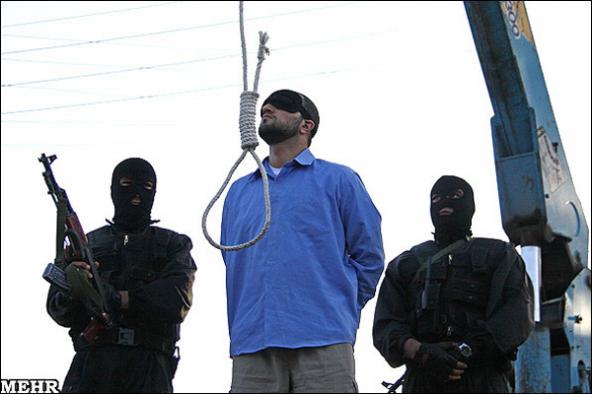
Article(s)
Outrage as Iran’s execution figures explode
on 12 February 2011
Iran hanged 121 people in six weeks between 20 December 2010 and 31 January 2011, many of them after unfair trails and for crimes that did not result in a person’s death.
2011
Drug Offenses
Fair Trial
Iran (Islamic Republic of)
Juveniles
Moratorium
Document(s)
Question of the death penalty. Report of the Secretary-General.
By United Nations, on 1 January 2011
2011
International law - United Nations
ruzh-hantesMore details See the document
The present report contains information covering the period from July 2010 to June 2011, and draws attention to a number of phenomena, including the continuing trend towards abolition, the ongoing difficulties in gaining access to reliable information on executions, and various international efforts towards the universal abolition of the death penalty.
- Document type International law - United Nations
- Themes list Trend Towards Abolition,
- Available languages Вопрос о смертной казни. Доклад Генерального секретаря.死刑问题. 秘书长的报告.La cuestión de la pena capital. Informe del Secretario General.
Document(s)
The Story of Chiou Ho-shun
By Taiwan Alliance to End the Death Penalty / Ho Chao-ti, on 1 January 2011
Legal Representation
More details See the document
Chiou Ho-shun, a death row inmate in Taiwan, may be executed at any time. He said, ‘ I hope you can save me, but if it’s too late, please scatter my ashes in the Longfeng harbour, and buy a meatball, come and see me.’
- Document type Legal Representation
- Themes list Torture,
Document(s)
The Execution of Cameron Todd Willingham: Junk Science, an Innocent Man, and the Politics of Death
By Paul C. Giannelli / Case Legal Studies Research Paper No. 2011-18 , on 1 January 2011
Article
United States
More details See the document
The case of Cameron Todd Willingham has become infamous and was enmeshed in the death penalty debate and the reelection of Texas Governor Rick Perry, who refused to grant a stay of execution. The governor has since attempted to derail an investigation by the Texas Forensic Science Commission.
- Document type Article
- Countries list United States
- Themes list Innocence,
Document(s)
World Day Mobilisation Kit
By World Coalition Against the Death Penalty, on 1 January 2011
Campaigning
frMore details Download [ pdf - 530 Ko ]
This mobilisation kit for the 2011 World Day dedicated to the inhumanity of the death penalty suggests activities and gives advice to hold successful World Day events.
- Document type Campaigning
- Themes list Networks,
- Available languages Kit de mobilisation pour la Journée mondiale
Document(s)
Beating the Death Penalty in Illinois
By World Coalition Against the Death Penalty / Aurélie Plaçais, on 1 January 2011
Lobbying
frMore details Download [ html - 16 Ko ]
In a video interview at the NCADP conference in Chicago, leading Illinois abolitionist Jeremy Schroeder explains how grassroots activism and political lobbying was an important factor in abolishing the death penalty in Illinois.
- Document type Lobbying
- Themes list Networks,
- Available languages Illinois : abolition, mode d'emploi
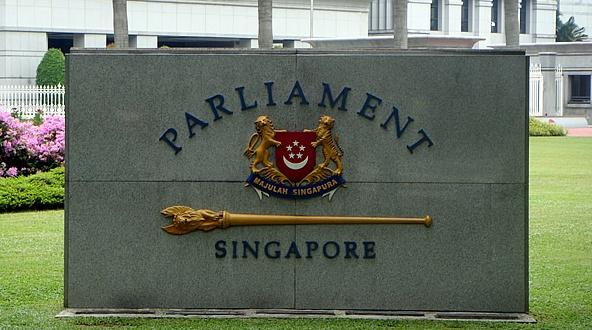
Article(s)
Singapore breaks three-year moratorium on executions
on 21 July 2014
On 18 July 2014, Singapore executed two death row prisoners, Tang Hai Liang, 36, and Foong Chee Peng, 48, bringing to an end a three-year official moratorium established by the government in 2011 as part of the review process of the mandatory death penalty.
2014
Moratorium
Singapore
Document(s)
A blow to human rights: Taiwan resumes executions: The Death Penalty in Taiwan, 2010
By Taiwan Alliance to End the Death Penalty, on 1 January 2011
2011
NGO report
zh-hantMore details See the document
This report details the administration of the death penalty in Taiwan. It discusses Taiwans obligations under international law, how executions are carried out, the profile of the condemned, discrimination in the sysem and discusses placing a moratorium on executions in Taiwan.
- Document type NGO report
- Themes list Networks,
- Available languages 重啓死刑執行 廢死之路大倒退- 2010台灣死刑報告
Document(s)
The death penalty in Council of Europe member and observer states: a violation of human rights
By Council of Europe / Ms Renate WOHLWEND, on 1 January 2011
International law - Regional body
frMore details See the document
The Parliamentary Assembly is opposed to the death penalty in all circumstances. The European experience has shown conclusively that the death penalty is not needed to check violent crime. The United States of America and Japan, as observer states, and Belarus, which aspires to membership of the Council of Europe are invited to join the growing consensus among democratic countries that protect human rights and human dignity by abolishing the death penalty. The report addresses a series of specific recommendations to the United States, Japan and Belarus aimed at promoting a moratorium on executions followed by definitive abolition of the death penalty.
- Document type International law - Regional body
- Themes list Trend Towards Abolition,
- Available languages La peine de mort dans les Etats membres et observateurs du Conseil de l'Europe – une violation des droits de l'homme
Document(s)
Japan’s Secretive Death Penalty Policy: Contours, Origins, Justifications, and Meanings
By David T. Johnson / Asian-Pacific Law & Policy Journal, on 1 January 2006
2006
Article
Japan
More details See the document
The secrecy that surrounds capital punishment in Japan is taken to extremes not seen in other nations. This article describes the Japanese state’s policy of secrecy and explains how it developed in three historical stages: the “birth of secrecy” during the Meiji period (1867 – 1912); the creation and spread of “censored democracy” during the postwar Occupation (1945 – 1952); and the “acceleration of secrecy” during the decades that followed. The article then analyzes several justifications for secrecy that Japanese prosecutors provide. None seems cogent. The final section explores four meanings of the secrecy policy that relate to the sources of death penalty legitimacy, the salience of capital punishment, the nature of Japan’s democracy, and the role and rule of law in Japanese society.
- Document type Article
- Countries list Japan
- Themes list Transparency,
Document(s)
Human Rights and Democracy: The 2010 Foreign & Commonwealth Office Report
By United Kingdom Foreign & Commonwealth Office, on 8 September 2020
2020
NGO report
Afghanistan
More details See the document
The report covers the period from January to December 2010, though some key events in early 2011 have also been included. It highlights the important progressbeing made, serious concerns that we have, and what we are doing to promote our values around the world. It will rightly be studied closely by Parliament, NGOs and the wider public. There is a chapter dedicated to the death penalty, as well as 2010 figures on the death penalty in target countries.
- Document type NGO report
- Countries list Afghanistan
- Themes list Networks,
Document(s)
An Innocent Man: Hakamada Iwao and the Problem of Wrongful Convictions in Japan
By David T. Johnson / The Asia-Pacific Journal, on 1 January 2015
2015
Article
Japan
More details See the document
The main aim of this article is to explore the problem of wrongful convictions in Japanese criminal justice by focusing on the case of Hakamada Iwao, who was sentenced to death in 1968 and released in 2014 because of evidence of his innocence.
- Document type Article
- Countries list Japan
- Themes list Fair Trial, Innocence,
Document(s)
The death penalty and society in contemporary China
By Wang Yunhai / Punishment ans Society 10(2), 137-151, on 1 January 2008
2008
Article
China
More details See the document
Why are death penalty provisions, convictions and executions so prevalent in China? This article aims to answer this question by way of defining China as a ‘state power’ based society characterized by a socialist social system. The prevalence of the death penalty in China can be explained in terms of the following factors: first, the death penalty is a political issue of state power; second, the death penalty is a crucial part of criminal policy in a ‘state power’-based society; third, the issue of whether to retain the death penalty is a political rather than a legal matter. The Chinese government has improved its death penalty system in recent years; however, the situation has not fundamentally changed. The future of death penalty policy and practice in China will depend primarily on legal rather than democratic developments. The death penalty serves as a focal point that can help illuminate issues of punishment and society in East Asia. Accordingly, this article will elaborate my theories regarding the death penalty in contemporary China, with the primary intent of elucidating the relationship between punishment and society in China.
- Document type Article
- Countries list China
- Themes list Networks,
Document(s)
Will Wrongful Convictions Be a Catalyst for Change in Japanese Criminal Justice?
By David T. Johnson / The Asia-Pacific Journal / Matthew Carney, on 1 January 2015
2015
Article
Japan
More details See the document
This article is a written explanation of the 12-minute Australian Broadcasting Corporation video of the same name.
- Document type Article
- Countries list Japan
- Themes list Fair Trial, Trend Towards Abolition, Innocence,
Article(s)
According to Taiwanese civil society, new President Tsai Ing-wen might relaunch debate on the abolition of the death penalty
By Marion Gauer, on 31 March 2016
Even though Taiwanese general mindset appears to be quite in favor of death penalty, Taiwanese civil society expects some changes to happen in the application of death penalty under the presidency of Tsai Ing-wen. In his article “Taiwan: Can Tsai Ing-Wen Change the Politics of Death?”, Michael Caster – graduate student at the Fletcher School of Law and Diplomacy at Tufts University, as well as human rights advocate and civil society consultant based in East Asia – quotes Executive Director of the Taiwan Alliance to End the Death Penalty, Lin Hsin-yi, on that controversial matter.
2016
Taiwan
Document(s)
Poster World Day 2008
By World Coalition against the death penalty , on 10 October 2008
2008
Campaigning
Trend Towards Abolition
frMore details Download [ pdf - 34 Ko ]
Poster World day against the death penalty 2009
- Document type Campaigning
- Themes list Trend Towards Abolition
- Available languages Affiche Journée mondiale 2008
Document(s)
Arcs of Global Justice
By Oxford University Press / Margaret M. Guzman / Diane Marie Amann, on 1 January 2018
2018
Book
More details See the document
This work honours William A. Schabas and his career with essays by luminary scholars and jurists from Africa, Asia, Europe, and the Americas. The essays examine contemporary, historical, cultural, and theoretical aspects of the many arcs of global justice with which Professor Schabas has engaged, in fields including public international law, human rights, transitional justice, international criminal law, and capital punishment.Table of Contents (regarding information on the death penalty)II. Capital PunishmentChapter 5: International Law and the Death Penalty: A Toothless Tiger, or a Meaningful Force for Change?Sandra L. BabcockChapter 6: The UN Optional Protocol on the Abolition of the Death PenaltyMarc BossuytChapter 7: The Right to Life and the Progressive Abolition of the Death PenaltyChristof Heyns and Thomas Probert and Tess BordenChapter 8: Progress and Trend of the Reform of the Death Penalty in ChinaZhao Bingzhi
- Document type Book
- Themes list International law, Death Penalty,
Document(s)
Wrongful Convictions and the Culture of Denial in Japanese Criminal Justice
By David T. Johnson / The Asia-Pacific Journal, on 1 January 2015
2015
Article
Japan
More details See the document
The release of Hakamada Iwao from death row in March 2014 after 48 years of incarceration provides an opportunity to reflect on wrongful convictions in Japanese criminal justice. My approach is comparative because this problem cannot be understood without asking how Japan compares with other countries: to know only one country is to know no country well. Comparison with the United States is especially instructive because there have been many studies of wrongful conviction there and because the U.S. and Japan are the only two developed democracies that retain capital punishment and continue to carry out executions on a regular basis. On the surface, the United States seems to have a more serious problem with wrongful convictions than Japan, but this gap is more apparent than real. To reduce the problem of wrongful convictions in Japanese criminal justice, reformers must confront a culture of denial that makes it difficult for police, prosecutors, and judges to acknowledge their own mistakes.
- Document type Article
- Countries list Japan
- Themes list Fair Trial, Innocence,
Document(s)
Eight case sheets (covering China, India, Indonesia, Japan, Malaysia, Pakistan, Singapore, Taiwan)
By Amnesty International / Anti-Death Penalty Asia Network, on 1 January 2011
2011
Academic report
More details See the document
In compiling this report, a number of cases have been reviewed which clearly demonstrate the very real dangers of applying the death penalty. Eight case sheets: Leng Guoquan (China), Devender P. Singh (India), Humphrey Eleweke (Indonesia), Hakamada Iwao (Japan), Reza Shah (Malaysia), Aftab Bahadur (Pakistan), Yong Vui Kong (Singapore), Chiou Ho-shun (Taiwan)
- Document type Academic report
- Themes list Networks,
Document(s)
State-Sanctioned Killing of Sexual Minorities: Looking Beyond the Death Penalty
By Mai Sato, Christopher Alexander - Eleos Justice and Capital Punishment Justice Project, Monash University, on 10 August 2021
2021
Academic report
Australia
Cruel, Inhuman and Degrading Treatment and Punishment
More details See the document
This report examines the extent to which states sanction the killing of sexual minorities. It looks beyond those countries that impose the death penalty for same-sex intimacy to the far greater number of countries in which state actors commission, condone, endorse and enable such killings.
He argues that the state-sanctioned killing of sexual minorities is often perpetrated well beyond the boundaries of the law, and even in countries that do not criminalise such conduct.
- Document type Academic report
- Countries list Australia
- Themes list Cruel, Inhuman and Degrading Treatment and Punishment
Document(s)
Activity Report 2014
By World Coalition Against the Death Penalty, on 1 January 2015
2015
NGO report
More details Download [ pdf - 772 Ko ]
The 2014 Activity Report displays the overall situation of the death penalty in different geographical areas of the world: Africa, Middle East and North Africa, Asia-Pacific, Americas and Europe. The report shows the developments, as well as the challenges, in the struggle against the death penalty. Finally, it presents the new strategies that the World Coalition against the Death Penalty is going to develop in the next years.
- Document type NGO report
- Themes list World Coalition Against the Death Penalty,
Document(s)
The Contemporary American Struggle with Death Penalty Law: Selected Topics and Cases
By Jerome A. Cohen / New York University (NYU), on 1 January 2013
2013
Arguments against the death penalty
More details See the document
The U.S.-China Death Penalty Reform Project of the U.S.-Asia Law Institute (USALI) at New York University School of Law is a product of cooperation between USALI and Chinese experts during the recent period of death penalty law reform in China and the U.S. It includes the full text of USALI’s U.S. death penalty law casebook, The Contemporary American Struggle with Death Penalty Law: Selected Topics and Cases, in English and Chinese, and an online forum for discussion and questions.
- Document type Arguments against the death penalty
- Themes list International law,
Document(s)
Silently Silenced: State-Sanctioned Killing of Women
By Eleos Justice, Cornell Center on the Death Penalty Worldwide , on 30 March 2023
2023
Academic report
Women
More details See the document
Silently Silenced: State-Sanctioned Killing of Women examines States’ involvement in ‘feminicide’. Feminicide is understood as the gender-motivated killing of women and girls that States actively engage in, condone, excuse, or fail to prevent. We use the term ‘feminicide’ to refer to the various forms of State-sanctioned killing of women and girls. In this report, we outline States’ direct involvement and complicity in the killings of women and girls and explain these deaths as a product of gendered forms of structural violence upheld and sustained by the State. We examine 3 types of feminicide: gender- related killings of women directly perpetrated by the State, such as the death penalty and extrajudicial killings; gender-related killings of women committed by non-State actors that are excused or condoned by the State; and gender-related killings of women that the State failed to prevent.
- Document type Academic report
- Themes list Women
Document(s)
THE PEOPLE’S REPUBLIC OF CHINA – The Death Penalty in 2000
By Amnesty International, on 8 September 2020
2020
NGO report
China
More details See the document
The attached report analyses the use of the death penalty in China in 2000 and examines sentencing patterns and the legislation behind the death penalty in China.
- Document type NGO report
- Countries list China
- Themes list Networks, Statistics,
Document(s)
Mental Illness and the Death Penalty in North Carolina
By American Civil Liberties Union, on 1 January 2007
2007
NGO report
More details See the document
As this report lays bare, entrenched obstacles within the criminal justice system impede efforts to recognize those with severe mental illness and to treat them fairly. As detailed in this report, these obstacles include the fact that: 1, mentally ill offenders, because of their impairments, often undermine their own defenses in a variety of ways that contribute directly to their convictions, death sentences and executions; 2, although state law exclusively defines mental illness as a mitigating factor for sentencing purposes, juries often perceive mental illness as an aggravating (rather than mitigating) factor. 3, the law governing mental illness in the context of the death penalty does not often align itself with clinical realities; thus mental health experts must often answer legal questions that do not conform to their medical analyses.
- Document type NGO report
- Themes list Mental Illness,
Document(s)
The Hidden Death Tax: The Secret Cost of Seeking Execution in California
By Natasha Minsker / American Civil Liberties Union, on 1 January 2008
2008
NGO report
More details See the document
California taxpayers pay at least $117 million each year at the post-conviction level seeking execution of the people currently on death row, or $175,000 per inmate per year. The largest single expense is the extra cost of simply housing people on death row, $90,000 per year per inmate more than housing in the general prison population. Executing all of the people currently on death row or waiting for them to die naturally – which will happen first – will cost California an estimated $4 billion more than if all the people on death row were sentenced to die of disease, injury or old age.
- Document type NGO report
- Themes list Networks, Financial cost,
Document(s)
Broken Justice: The Death Penalty in Virginia
By Rachel King / American Civil Liberties Union / Virginia, on 1 January 2003
2003
NGO report
More details See the document
In April of 2000, the ACLU of Virginia published its first report on the status of the death penalty in Virginia. Since that time, a remarkable number of changes have taken place on this issue both in Virginia and throughout the country, which necessitated a second edition of the report. The first report examined four aspects of the administration of capital punishment in Virginia: prosecutorial discretion in the charging of capital crimes, quality of legal representation for the accused at trial, appellate review of trials resulting in the death penalty and the role of race. This report will look at those four areas and also add several other issues: the problem of prosecutorial misconduct in capital cases, the problem of executing mentally retarded offenders, the question of executing juvenile offenders and the danger of executing wrongfully convicted persons, as shown by the growing number of individuals who have been exonerated while on death row.
- Document type NGO report
- Themes list Country/Regional profiles,
Document(s)
Unequal, Unfair and Irreversible: The Death Penalty in Virginia
By Laura LaFay / American Civil Liberties Union / Virgina, on 1 January 2000
2000
NGO report
More details See the document
This report examines four key aspects of the administration of capital punishment in Virginia: prosecutorial discretion in the charging of capital crimes, quality of legal representation for the accused at trial, appellate review of trials resulting in the death penalty and race. During its preparation, another issue became apparent: the state’s record keeping.
- Document type NGO report
Document(s)
Broken Justice: The death penalty in Alabama
By Rachel King / American Civil Liberties Union / Alabama, on 1 January 2005
2005
NGO report
More details See the document
This report documents unfairness and unreliability that plague the death penalty system in Alabama and makes several recommendations, including a moratorium on executions. The major areas of focus the report examines are: Inadequate Defence, Prosecutorial Misconduct, Judicial Overrides, Execution of the Mentallly Retarded, Racial Discrimination, and Geographic Disparities.
- Document type NGO report
- Themes list Country/Regional profiles,
Document(s)
SLAMMING THE COURTHOUSE DOORS – Denial of Access to Justice and Remedy in America
By American Civil Liberties Union / Washington, on 8 September 2020
2020
NGO report
United States
More details See the document
According to a new report by the American Civil Liberties Union (ACLU) entitled, “Slamming the Courthouse Doors: Denial of Access to Justice and Remedy in America,” many states severely restrict access to justice for capital defendants and limit the availability of remedies to correct errors. The problem of inadequate counsel continues to pervade death penalty systems across the country: “Few states provide adequate funds to compensate lawyers for their work or to investigate cases properly. In addition to inadequate funding, the majority of death-penalty states lack adequate competency standards. Many states require only minimal training and experience for attorneys handling death penalty cases, and in some cases capital defense attorneys fail to meet the minimum guidelines for capital defense set by the American Bar Association (ABA),” according to the ACLU. The report also states that the absence of a right to counsel in post-conviction appeals leaves capital defendants with few options to address serious errors during their trial.
- Document type NGO report
- Countries list United States
- Themes list Networks,
Document(s)
Death In Decline ’09: Los Angeles Holds California Back as Nation Shifts to Permanent Imprisonment
By American Civil Liberties Union / Northern California, on 8 September 2020
NGO report
United States
More details See the document
The tide is turning in the United States from death sentences to permanent imprisonment. A growing number of states are choosing permanent imprisonment over the death penalty, fueled by growing concerns about the wrongful conviction of innocent people and the high costs of the death penalty in comparison to permanent imprisonment. In 2009, the number of new death sentences nationwide reached the lowest level since the death penalty was reinstated in 1976. California lags behind in this national trend. The Golden State sent more people to death row last year than in the seven preceding years. By the close of 2009, California’s death row was the largest and most costly in the United States.
- Document type NGO report
- Countries list United States
- Themes list Sentencing Alternatives, Networks,
Document(s)
Illegal Racial Discrimination in Jury Selection: A Continuing Legacy
By Equal Justice Initiative, on 1 January 2010
2010
NGO report
More details See the document
Today in America, there is perhaps no arena of public life or governmental administration where racial discrimination is more widespread, apparent, and seemingly tolerate than in the selection of juries. Nearly 135 years after Congress enacted the 1875 Civil Rights Act to eliminate racially discriminatory jury selection, the practice continues, especially in serious criminal and capital cases.
- Document type NGO report
- Themes list Networks,
Document(s)
Mental Illness and the Death Penalty
By American Civil Liberties Union, on 1 January 2009
2009
NGO report
More details See the document
This overview discusses the intersection of the law and the challenges faced by mentally ill capital defendants at every stage from trial through appeals and execution. It provides examples of some of the more famous cases of the execution of the mentally ill. Lastly, it describes current legislative efforts to exempt those who suffer from a serious mental illness from execution and the importance of such efforts.
- Document type NGO report
- Themes list Mental Illness,
Document(s)
The Forgotten Population: A Look at Death Row in the United States Through the Experiences of Women
By American Civil Liberties Union, on 1 January 2004
2004
NGO report
More details See the document
This report — the first-ever national survey of women currently on Death Row — found that women who have been sentenced to death are often subjected to harsh living conditions, including being forced to live in virtual isolation, and many are sentenced for crimes that don’t result in a death sentence for men.
- Document type NGO report
- Themes list Women,
Document(s)
The Persistent Problem of Racial Disparities in The Federal Death Penalty
By American Civil Liberties Union, on 1 January 2007
2007
NGO report
More details See the document
This paper details the profoundly troubling evidence that racial disparities continue to plague the modern federal death penalty. Of the next six federal inmates scheduled for execution, all are African-American defendants. Defendants of color make up the majority of federal death row and the majority of modern federal executions.
- Document type NGO report
- Themes list Minorities, Discrimination,
Document(s)
World Report 2010
By Human Rights Watch, on 1 January 2010
2010
NGO report
More details See the document
This report is does not specificly concern the death penalty but examines the use of the death penalty on juveniles and those with mental illness in many retentionist countries. It contains information gathered in 2009.
- Document type NGO report
- Themes list Juveniles, Mental Illness,

